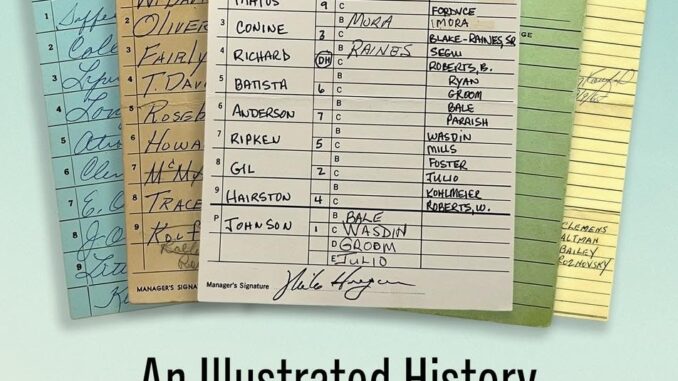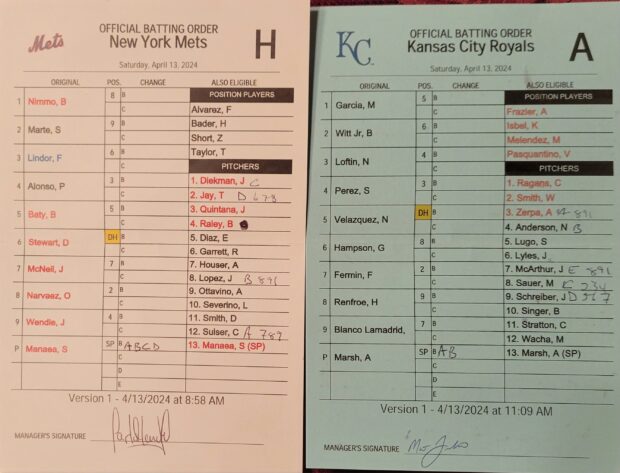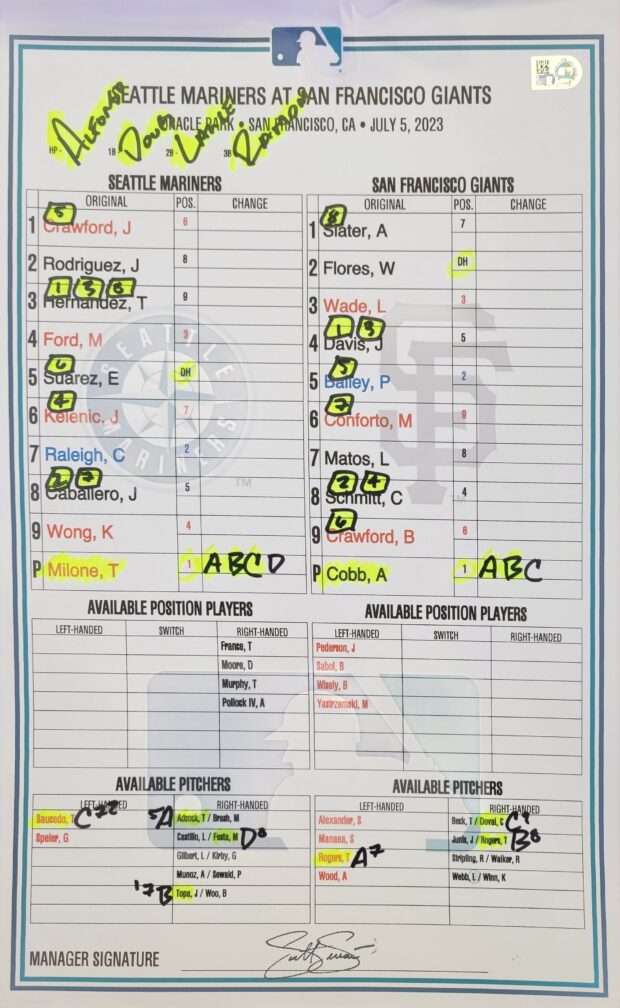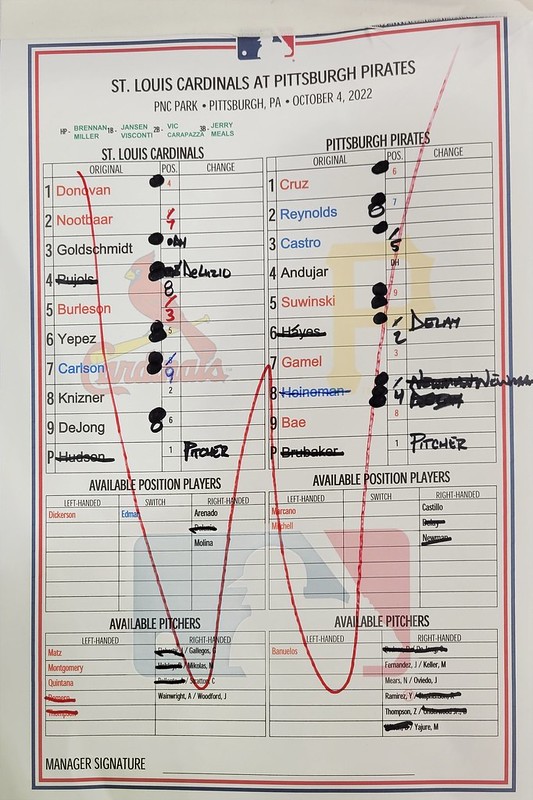

Review Fix chats with Tom O’Reilly, author of The Lineup Card: An Illustrated History of the Baseball Collectible about the creative process behind the book.
About the Book:
This is the first book to focus on a small but essential piece of every baseball game played during the last 100-plus years–the lineup card, used to record the full lineup and batting order for both teams. Drawing on input from dozens of memorabilia experts, collectors, team and league executives, umpires, coaches and managers, the author tells the story of the lineup card’s role in America’s pastime, from its history and usage to cards from famous games and the people who collect them. Nearly 200 illustrations include cards for Sandy Koufax’s 1965 perfect game, Cal Ripken’s record-breaking 2,131st consecutive game and the final game of Boston’s first World Series title in 86 years.
About the Author:
Tom O’Reilly is a lineup card collector who lives in Southington, Connecticut. He spent 10 years as a trade magazine journalist and editor, and has also written sports articles for publications including the Connecticut Post, New Haven Register and Sports Collectors Digest.
Review Fix: What’s inspired this book?

Tom O’Reilly: When I started collecting baseball lineup cards 11 years ago, I wanted to learn all I could about them, including how they are used by teams and umpires, their history, interesting stories about lineup cards, who collects them and what cards they have, how much they are worth, etcetera. The problem was, there was very little information available about lineup cards, just a couple of articles. So I started doing my own research.
Along the way, I read a statement on Baseball America’s web site that said “over 70,000 books have been written covering every facet of our national pastime.” Yet none of those 70,000 baseball books were about lineup cards, an intrinsic part of the game – a baseball game at almost any level does not start until after the traditional lineup card exchange at home plate.
I had always wanted to write a book, realized that baseball’s lineup card had a story to tell, and had enough personal interest in them to want to tell their story. So I wrote The Lineup Card: An Illustrated History of the Baseball Collectible, which was published by McFarland Publishing in 2024.
Review Fix: What was the writing process like?
O’Reilly: I had journalism and editorial experience, so I was comfortable doing research, interviewing and writing, but I had never written anything more than about 2,000 words. At the suggestion of one of my brothers, I started the process by writing an article about lineup cards for Sports Collectors Digest. It got me talking to collectors and baseball memorabilia experts about lineup cards, and gave me credibility when I went to speak with others specifically for the book.
Organizationally, writing the book was a challenge far beyond anything I had done before. For example, I collected about 300 images of lineup cards for the book, mostly from other collectors and organizations. Keeping track of all of them and figuring out which I would use – I ended up using about 200 of them in the book – and where in the book they would go forced me to be highly organized.

Review Fix: Do you have a collection of lineup cards? If so, any favorites?
O’Reilly: My kids and I have a collection of about 500 lineup cards. What is somewhat unique about our collection is that 85 percent of our lineup cards were given to us by managers, coaches, and umpires, as opposed to us buying them. We have cards ranging from college games right through Major League Baseball games.
My favorite lineup card from a historic perspective is from Albert Pujols’ final MLB game in 2022 which included his last MLB hit and RBI. The card came from the St. Louis bullpen. I was shocked that the Cardinals would give away such an historic card, but their bullpen had a superstition about leaving the cards in the bullpen rather than keeping them, and I was incredibly fortunate able to get the card.
My favorite card from a personal perspective is the dugout lineup card from a Seattle Mariners at San Francisco Giants game in 2023 that my family was at. While nothing overly exciting happened in the game, it was the first to Oracle Park for all of us. MLB teams almost never give away the dugout card as they are typically sold, but for whatever reason, a Seattle coach was nice enough to give us the card after the game.
Review Fix: What made this journey a special one for you?
O’Reilly: In doing my lineup card research, I met a lot of incredibly nice people who were very generous in sharing their time and knowledge with me. I could not have written this book without their collective help.
Review Fix: Who do you think will enjoy this book the most?
O’Reilly: Hardcore baseball fans who appreciate the game’s many nuances will enjoy learning about the small but important role lineup cards play in America’s pastime.
Review Fix: What else can you say about this book to entice readers?

O’Reilly: The book includes many neat stories revolving around lineup cards that are largely unknown, and includes pictures of those cards. A couple examples include the story of the lineup card that was pre-formatted for use in what was to have been a Toronto Blue Jays at Baltimore Orioles game on September 11, 2001. Of course, the lineup card was not filled in with the team lineups because of the tragic events of that day that impacted all of America. Another story is how a Boston Red Sox fan paid $165,000 – the most ever spent on a lineup card – to buy the lineup card from Boston’s historic 2004 World Series title-clinching victory.
I have a few copies of the book left, so if someone would like to purchase it directly from me, they can email me at [email protected].
Review Fix: What’s next for you?
O’Reilly: I continue to go to games and collect lineup cards, and have since written another article about lineup cards for Sports Collectors Digest. I also have had several people reach out to me to ask questions about lineup cards. I am always willing to share the knowledge I have, and often learn a thing or two about lineup cards in the process.
Review Fix: Anything else you’d like to add?
O’Reilly: I am glad I did not know on the front end just how much time and effort it would take to write the book, but now that it is done, I am very happy I did!
Review Fix: Where can people go to find out more about you?
O’Reilly: If anyone wants to know what I am up to lineup card-wise, I continue to write a blog about my experiences chasing lineup cards at games as well as some interviews of other lineup card collectors, and occasionally news regarding lineup cards. The blog can be found at: https://lineupcards.wordpress.com/.
If anyone has questions about lineup cards, they are welcome to email me at [email protected].


Leave a Reply